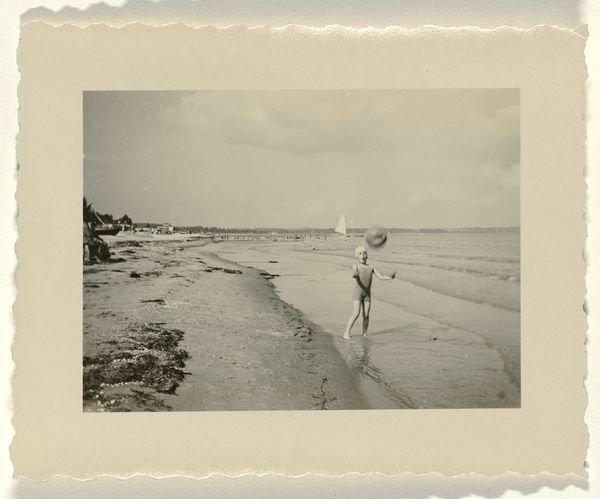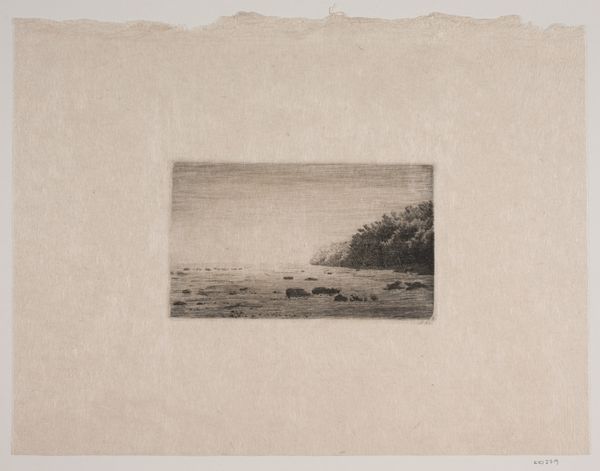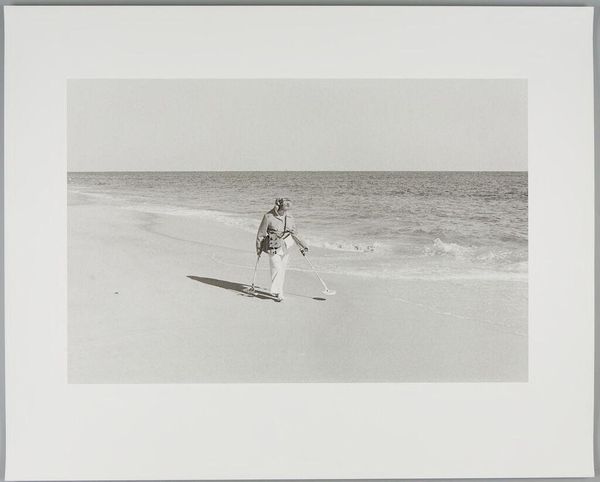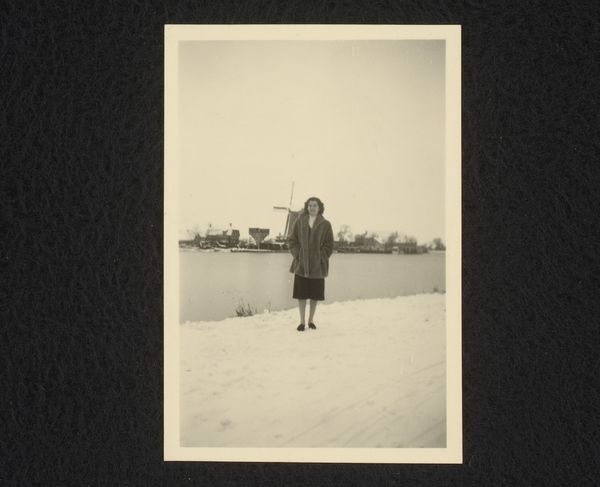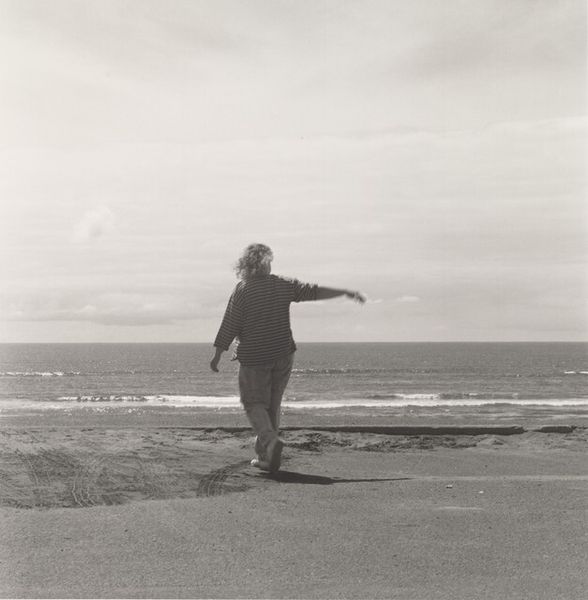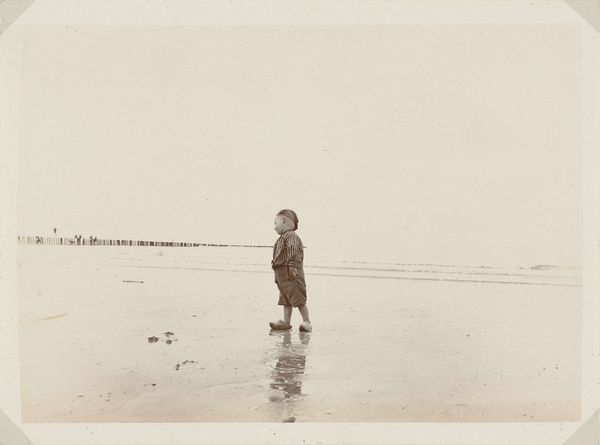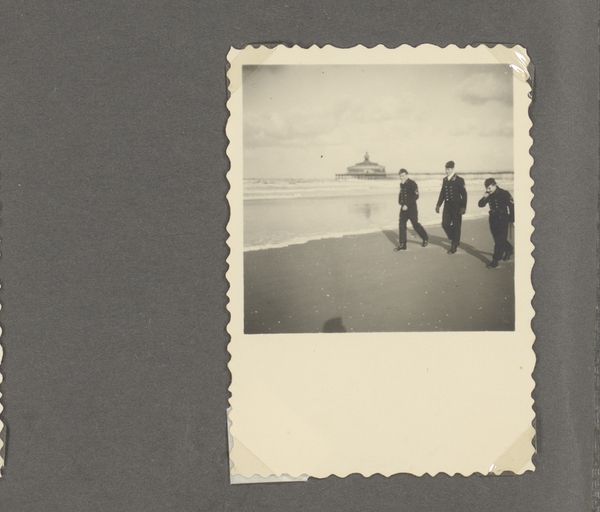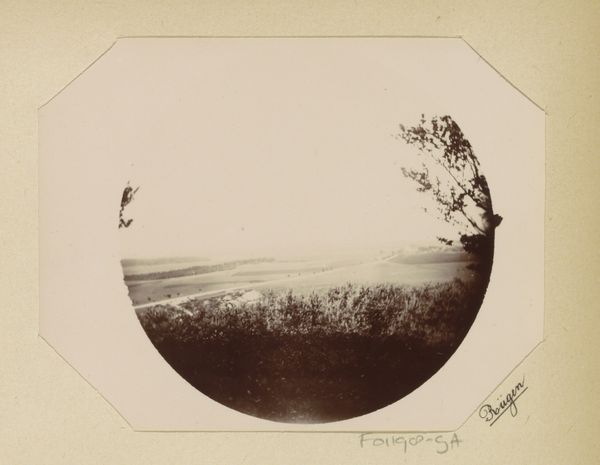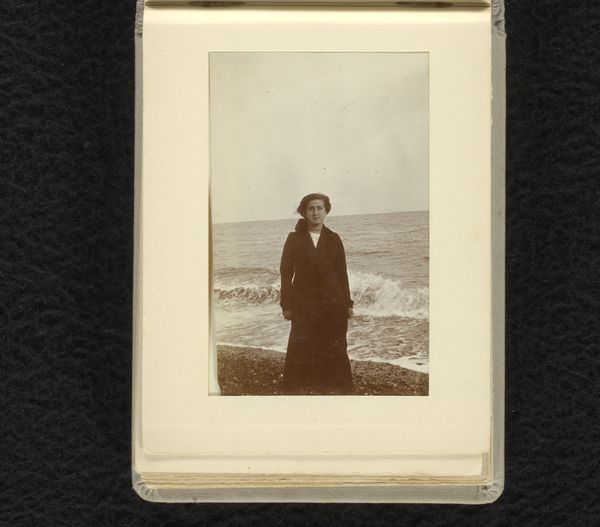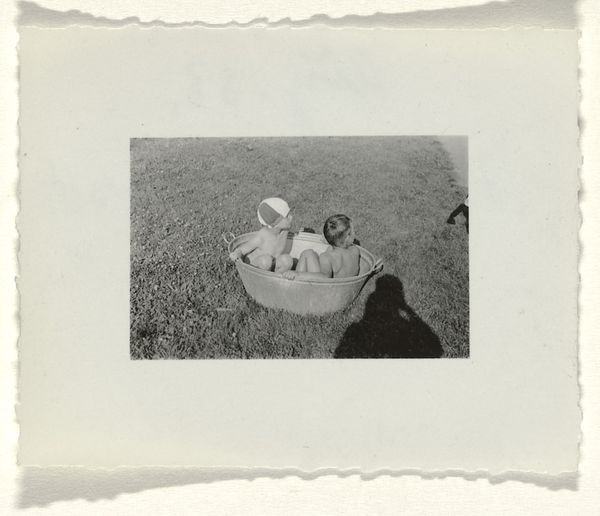
photography, gelatin-silver-print
#
portrait
#
landscape
#
photography
#
gelatin-silver-print
#
realism
Dimensions: height 80 mm, width 105 mm
Copyright: Rijks Museum: Open Domain
Curator: Looking at this photograph, "Isabel Wachenheimer op het strand bij de zee, gooiend met een bal," taken sometime between 1934 and 1939, one immediately senses a carefree innocence, a moment of youthful joy captured on film. Editor: Absolutely, that's my first impression too. There’s a stark simplicity to it, the muted tones of the gelatin silver print adding a nostalgic, almost melancholic layer. It almost feels like a dream. Curator: This work emerges in a time of growing unrest and violence across Europe. Think about the position of Jewish people in the late 1930s and this snapshot reads as a powerful intervention against their growing erasure from public life, a quiet reclamation of visibility. Editor: You're right to contextualize this photo; considering the broader historical environment really changes how we interpret it. But it is not possible to look at this picture without noticing it's emphasis on the seaside setting, how these popular destinations changed from being places for the wealthy and aristocratic into public and communal playgrounds. There is something profoundly democratic about the beach, about going to 'the sea.' Curator: Precisely, and if we consider Isabel as a Jewish child then her presence in this public, "democratic," space is one way for her, and her family, to stake claim to place and identity despite increasing oppression. This challenges dominant narratives by illustrating that while many people of Jewish decent fled during this time, those that remained and lived life resisted erasure and invisibility. Editor: Right. Her active involvement, tossing the ball, underscores a youthful dynamism against the threat of historical and political forces, pushing for social control. And it highlights the way public leisure facilities such as the sea became contentious spaces where access became politicised. Curator: That's an excellent point to remember when we view seemingly uncomplicated artwork that reminds us how context shifts, how innocence resists, and how claiming space—physical or otherwise—remains a crucial form of agency. Editor: Absolutely. Reflecting on this picture allows us to see it, and photographs in general, as interventions, whether intentional or incidental, within ongoing political and cultural shifts.
Comments
No comments
Be the first to comment and join the conversation on the ultimate creative platform.
